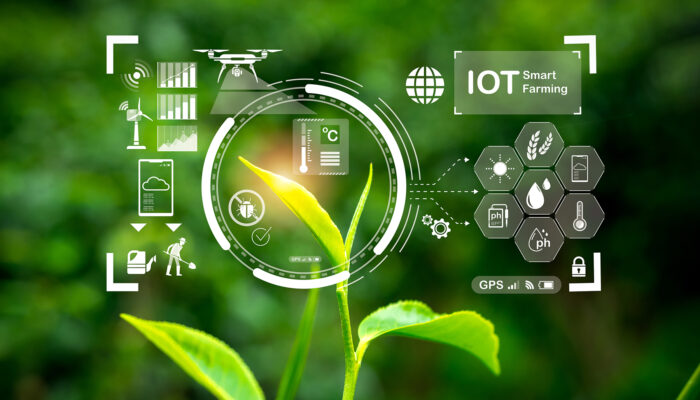Global investment data shows that climate tech funding reached 10% of global VC investment in 2022. Total VC flows into climate tech have increased almost 25x since 2012 when they only accounted for 3% of total VC activity.[1] [2]Moreover, it signifies positive momentum in the battle against climate change, which is critical given the increasingly alarming projections.
While the increased level of investment is undeniably a welcome development, it’s important to highlight that most funds have flowed to highly ambitious ventures developing blue-sky technologies like hydrogen electrolysers and direct air capture and storage. These technologies are still in the early stages of development with many yet to attain clear use cases or the economies of scale required for commercial viability. Consequently, the immediate impact of these investments in mitigating climate change will be limited.
The climate adaptation sector stands in stark contrast to this. Companies within this space rely on established and proven technologies and can deliver quick wins against climate change, yet they remain severely underfunded. Data from the Climate Policy Initiative’s 2021 report revealed that climate adaptation accounted for only 7% of global climate-related investments in 2019 and 2020.[3] This shows a significant disparity between the potential impacts and the current allocation of resources in addressing the urgent challenges of climate change.[4]
The three pillars of climate adaptation
The concept of climate adaptation rests upon three crucial pillars: moderate, prepare, and restore. Within each of these pillars are companies with solutions that can help us moderate the effects of climate change, build resilience and restore ecosystems.
Moderate
A range of innovative companies are helping to slow the pace of climate change and prevent the worst effects from materialising by providing solutions that moderate potential damages and conserve resources. Dutch-based Physee Technologies is at the forefront of efforts to clean up the built environment, which accounts for approximately 40% of global annual emissions.[5] Their pioneering solution, known as SmartSkin, is revolutionising the energy efficiency of buildings.
Physee’s SmartSkin integrates sensors, solar cells, and batteries into window frames, boosting building energy efficiency by up to 30%. With a self-learning algorithm, it analyses temperature, light, and air quality to manage climate-related aspects like sun blinds, lighting, ventilation, and AC. By dynamically adjusting these factors in real-time, SmartSkin optimizes energy usage and maintains an ideal indoor environment.
Hydraloop has pioneered a groundbreaking water-recycling appliance for homes. This innovative system treats and purifies water from showers, washing machines, and sinks, allowing for reuse in toilets, gardens, and laundry. What sets Hydraloop apart is its chemical-free water treatment using air bubble technology. By infusing millions of bubbles into the water, contaminants adhere to the bubble surfaces, which are then skimmed off and directed to the sewerage system. Hydraloop has installed its systems in Europe, the Middle East, and Africa, and developed a commercial-grade solution for hotels and businesses.
Sweden based company, Drupps, specialises in helping companies secure their sustainable water supply for the long term. Their innovative solution enables efficient water extraction from the atmosphere, revolutionising how we obtain water and reducing usage for a wide range of industrial businesses. The solution can generate unlimited water and be deployed in any environment.
CarbonRe has developed an advanced industrial decarbonization technology. The company’s first application Delta Zero Cement aims to reduce the impact of the highly pollutant cement industry, responsible for approximately 7% of global Co2 emissions.[6] Delta Zero uses machine learning to efficiently analyse cement plant data to identify fuel optimization opportunities.
Prepare
The “Prepare” pillar encompasses a diverse set of solutions designed to fortify resilience, minimise risks, and protect communities and ecosystems from the far-reaching consequences of climate change. A host of intriguing companies have emerged in this space, bringing forth innovative solutions that concentrate on early warning systems and forecasting.
One such company is Dryad, a German start-up dedicated to combating climate change through its emphasis on ultra-early wildfire detection, microclimate monitoring, and ecosystem restoration. Dryad’s pioneering technology leverages wireless networks and embedded sensors to detect smoke and collect critical data such as temperature, air pressure, and humidity. By detecting and containing fires at their nascent stages, they prevent their escalation into uncontrollable disasters.
Another exciting company is Tomorrow.io, a weather technology company that provides real-time weather forecasting services. Operating from Israel and Boston, the company is in the midst of launching a constellation of advanced radar-equipped satellites to provide hyper-local weather data and forecasts for almost any location on Earth. Armed with accurate and up-to-date weather insights, governments, communities, and businesses can make more informed decisions and take necessary precautions to minimise the impact of extreme weather events and climate-related risks.
Restore
Companies operating within the restoration pillar are dedicated to developing solutions prioritising the restoration and rejuvenation of ecosystems, biodiversity, and natural resources affected by climate change. A pioneer in this space for the last decade is BioCarbon Engineering; a company developing a tree-planting drone technology used to combat industrial-scale deforestation. Their drones can survey environments and disperse seeds at high speeds across vast areas, enabling the planting of up to 100,000 trees in a single day. The company aims to plant 500 billion trees by 2060.
C-Capture is a leading company that has developed a financially viable, eco-friendly, and energy-efficient approach to capturing carbon dioxide (CO2) emissions from companies in sectors like cement and glass manufacturing. The company’s technology is based on a new class of solvents that can capture CO2 from flue gases without high temperatures or pressures. This makes the technology much more energy-efficient than traditional carbon capture methods and reduces the cost of capturing CO2.
Following a successful milestone plant testing program at Drax, the UK’s leading renewable electricity source and the largest power plant in Western Europe, the program showed that C-Capture’s technology can capture CO2 from large-scale industrial facilities.
The built environment offers stand-out opportunities
As the world grapples with the climate crisis, focusing on the built environment, which accounts for approximately 40% of global annual emissions, is critical. Creating more sustainable and climate-resilient homes in climate-resilient regions offers a significant opportunity to strengthen resilience and reduce risk and vulnerability to climate change. It also offers vast investment opportunities with the market for sustainable buildings expected to represent a $24.7 trillion investment opportunity by 2030.[7]
According to UN-Habitat, approximately 3 billion people will require improved housing by the end of this decade, meaning around 96,000 new homes must be built daily.[8] As individuals migrate to areas less vulnerable to climate risks, lucrative opportunities with potentially high returns on investment will emerge. Research conducted by Climate Alpha indicates that early investments in climate-resilient regions will yield a 70% higher return on real estate portfolios by 2030.[9]
Governments are already introducing incentives that should serve to boost investment in the coming years. These incentives take various forms, including tax benefits, grants, and low-interest loans. The United States, for instance, has implemented initiatives like the Energy Efficient Commercial Buildings Tax Deduction to stimulate sustainable building investments. Likewise, the European Union provides tax breaks and grants for sustainable building investors, complemented by low-interest loans to finance the construction or renovation of sustainable buildings.
Public financing has paved the way for private investors
Climate adaptation is a critical and necessary undertaking – one that offers what we believe to be amongst the greatest short-term investment opportunities in the climate sector. The market is huge and growing, with Bank of America estimating that the climate adaptation market could be worth as much as $2 trillion annually within five years.[10]
While public sector funding continues to be the primary driver of climate adaptation investment, contributing around 98% of all adaptation funding[11], an enormous opportunity exists for private investors. The public sector has already laid the groundwork, offering concessionary funding and underwriting mechanisms to support climate adaptation investments. By tapping into these resources, private investors can access and deploy capital at favourable terms, reducing the financial barriers and risks associated with climate adaptation projects.
Leading corporations like SwissRe and Danone have already recognised the climate adaptation opportunity. SwissRe has established several partnerships, including Kenya Livestock Insurance Program and Building Resilience in India. Danone is also making considerable efforts to build climate resilience in its supply chains by working with smallholder farmers.
Mobilising private capital will be particularly critical in countries across Africa and other parts of the developing world. According to an analysis of the Nationally Determined Contributions (NDCs) of 51 African countries, an estimated US$579.2 billion in adaptation financing is needed from 2020 to 2030. If current trends persist until 2030, total adaptation investments will reach only $125 billion, falling well short of the estimated $579.2 billion required[12], leaving a huge opportunity for the private sector to seize.
Learn more about us.
View our transactions.










